What these leaked bikes tell us about Tour de France tech and the future of design
Trek, Canyon, and Pinarello are all teasing unreleased bikes which follow a particular formula
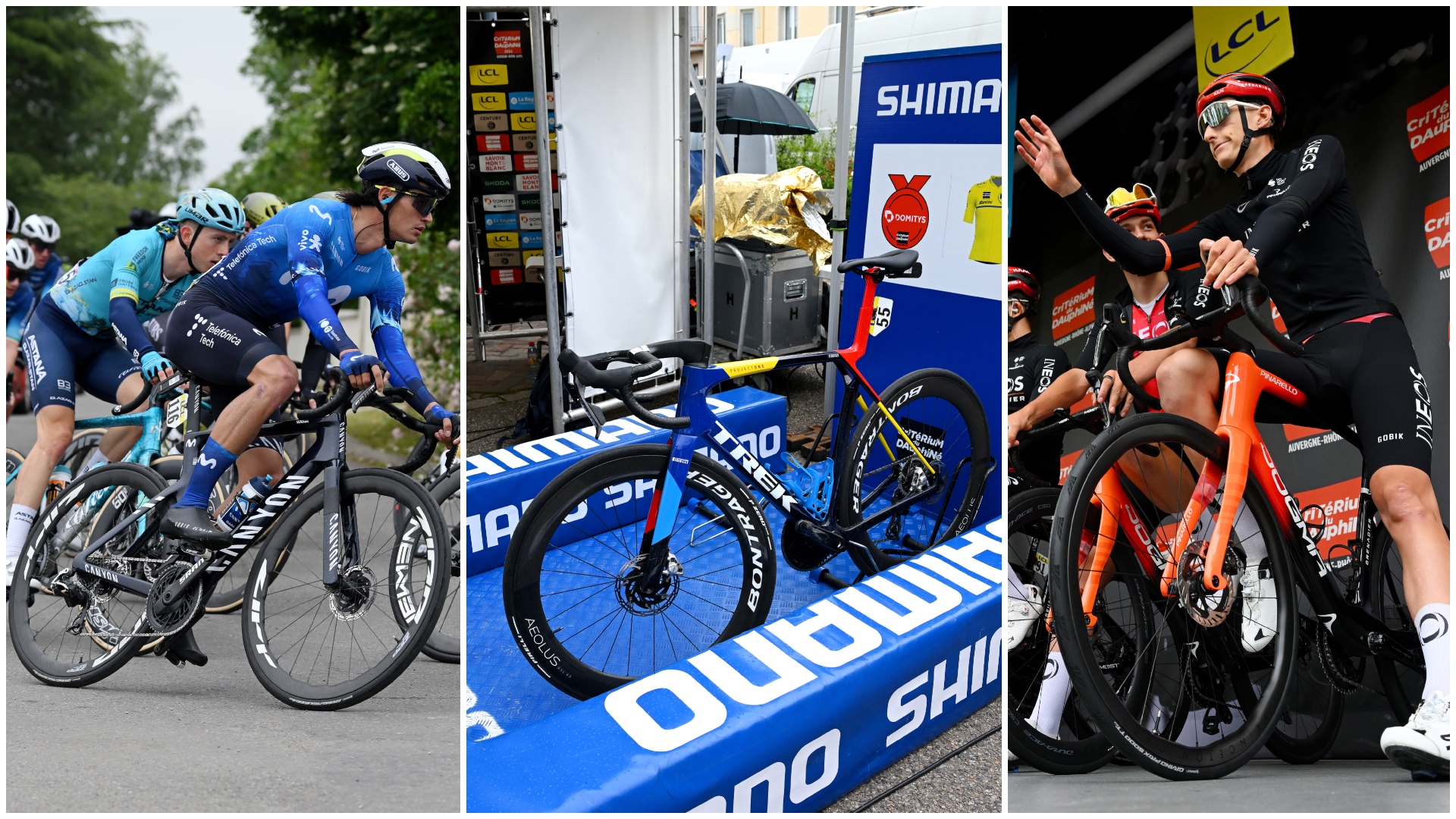

The Critérium du Dauphiné has long been regarded as the crucial final rehearsal before cycling’s biggest stage event, the Tour de France. However, the Dauphiné’s significance extends far beyond testing the main GC contenders - it is equally important for showcasing the latest in bike technology, and hinting at what consumers may even be riding by the end of the year.
Both brands and teams aim to equip riders with the most advanced machinery their sponsors offer at the Tour de France, making the Dauphiné the ideal stage for testing new, often unreleased, bike tech in anger before the season's peak. The 2024 edition is no exception, with Pinarello, Trek, and Canyon teasing what look to be new bikes, all emphasizing a formula that seems set to dominate the next era of bike design.
Trek joins the single race bike ethos

Trek's 'Madone/Emonda' has been hiding in plain site at the Tour de France warm up race
Perhaps the most prominently displayed, and shop floor-ready bike of our list is Lidl-Trek's new race machine. The new bike, which seems to be branded as a Madone replacement (though, with a subtle Émonda underlay in recent images), has gone on a crash diet since the Madone SLR's release in 2022, and we think it showcases how improved materials science knowledge is causing a shift in bike design.
The new model features slimmed-down tube shapes, including a reduction in depth at the head tube, down tube, and fork blades compared to the Madone SLR.
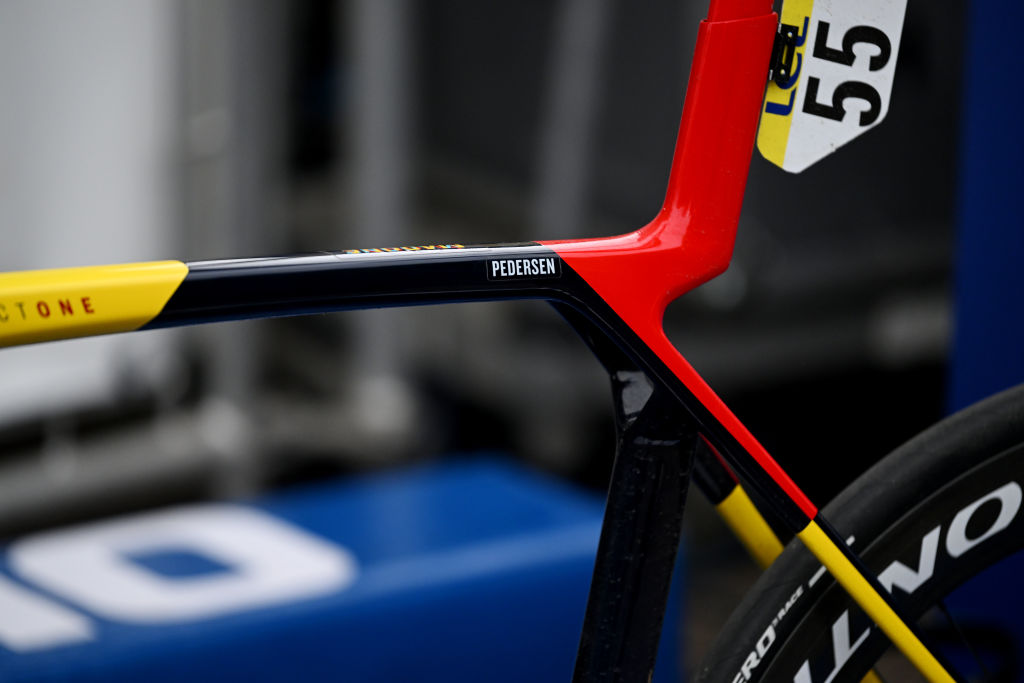
The new bike clearly still uses the Iso-Flow
The new bike appears to converge features seen on climbing bikes (like, the Émonda) with the aerodynamic features of the current Madone SLR, such as the reportedly watt saving Iso-Flow seatpost and integrated aero cockpit. Previously, smaller tube shapes might have compromised stiffness, but engineers appear to have overcome this issue. Mads Pedersen, known for his powerful pedaling, won stage one of the Dauphiné on the new Madone, suggesting that the new bike is good enough for sprinters and climbers alike.
This follows in the footsteps of Specialized, who ditched its 'all-out-aero' Venge with the introduction of the Tarmac SL7 a couple of years ago.
Canyon Aeroad stays true to the name

Canyon's new bike has been seen within the peloton at the Dauphine
Canyon looks to be continuing a two bike strategy, however still takes inspiration from the same design philosophy.
The German brand has been teasing what looks to be an Aeroad CFR replacement over the last few weeks, with images first arising on social media of Mathieu van der Poel using what looked to be a new handlebar. Formula One even got involved too, with Valteri Bottas being seen aboard the new aero bike at the Monaco Grand Prix. Subsequently, the bike has been used for the first time in anger at the Dauphine by the Alpecin Dequininck squad.
It's a case of iteration rather than revelation for the potential new Aeroad, which shares a similar silhouette to the current generation bike, but there are some intriguing aero upgrades at the front end in the shape of a revised cockpit and head tube area.
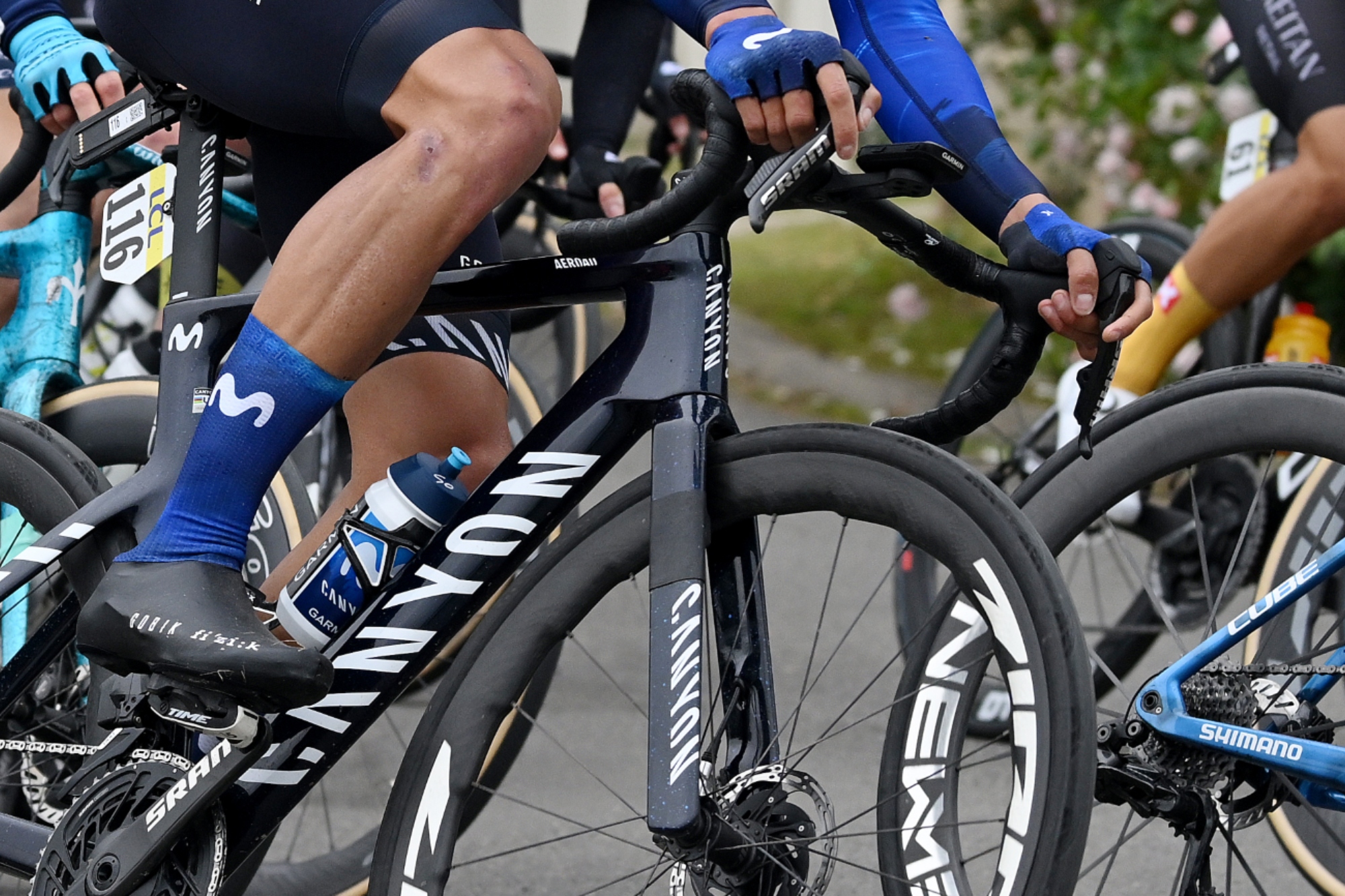
It appears that Canyon has put a lot of effort into smoothing the airflow between the headtube and downtube, which a much more rounded headtube-downtube interface. The headtube looks like it may have become slightly narrower too, though this is tricky to see from initial photos.
Like its rivals, Canyon's new race bike does look to have lost some weight towards the rear of the chassis, though not the same crash diet seen by the probable new Madone. Both the seat stays, and the seat post have reduced in size, and although tricky to confirm, we think it's likely the new seatpost takes advantage of the UCI's new ruling on seat post size.
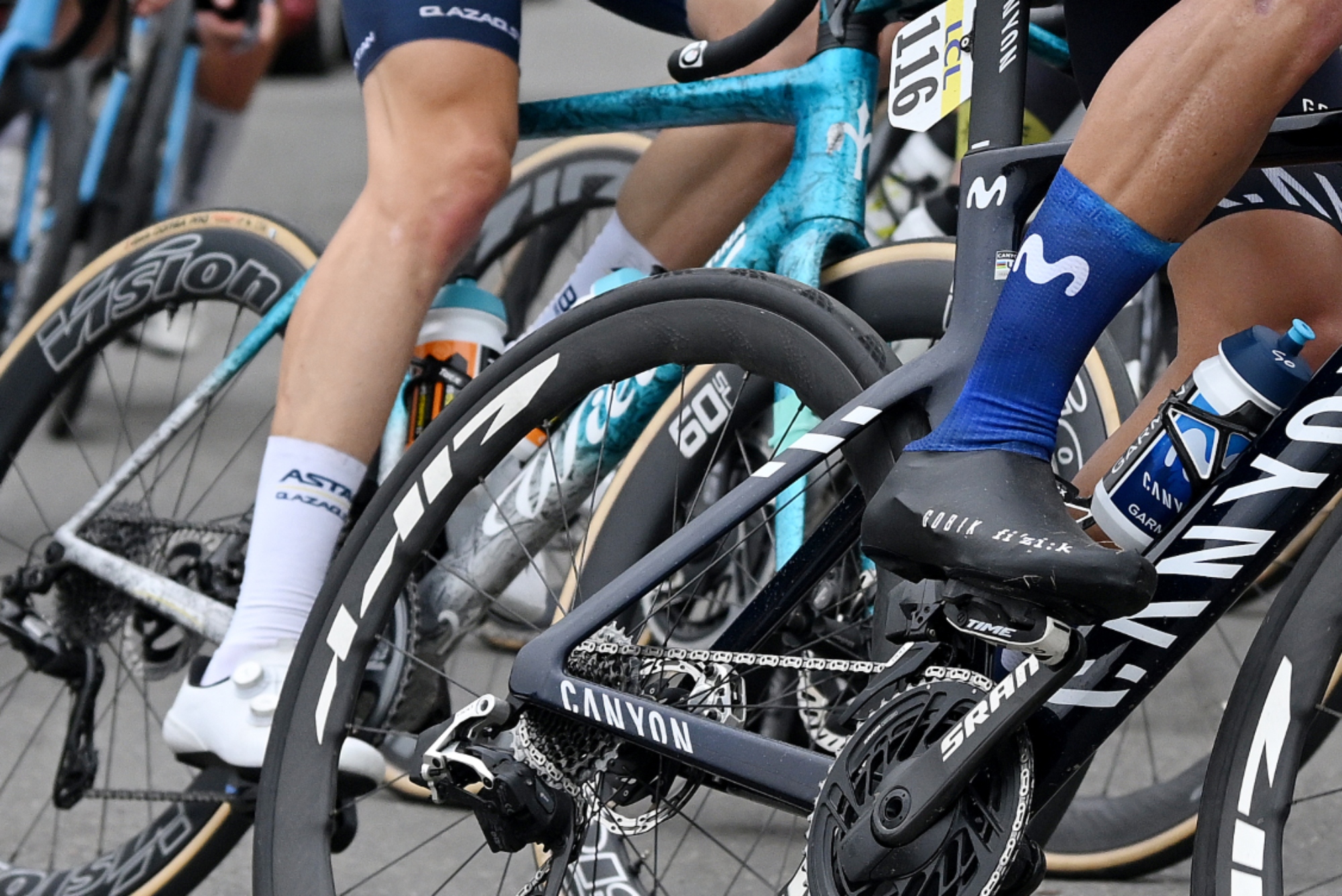
The trend of aero up front, weight saving at the back may make for some slightly strange aesthetic balances, but technically, it makes perfect sense.
When I spoke with prominent aero industry expert Simon Smart a few months ago, he confirmed that the general consensus is still that "around 70%" is a realistic ballpark figure of how much drag is caused by the rider. This means that by the time the wind has had a chance to hit your arms and legs, bike aerodynamics plays a far smaller part in the bikes overall efficiency, making it a prime target for brands to focus on saving weight, and improving stiffness with little detriment to system efficiency.
Pinarello hit home on stiffness with new Dogma F
Pinarello too has taken a similar approach to the competition, with what appears to be its new race bike, which we spotted on an altitude training camp last week. An early adopter of the one-bike-fits-all philosophy, Pinarello has further optimized aerodynamics with its latest model, a direct replacement for the Dogma F. The bike features a deeper head tube, narrower fork blades, and a more refined head tube-to-downtube transition - following the same design philosophy as the likely-new Canyon Aeroad.
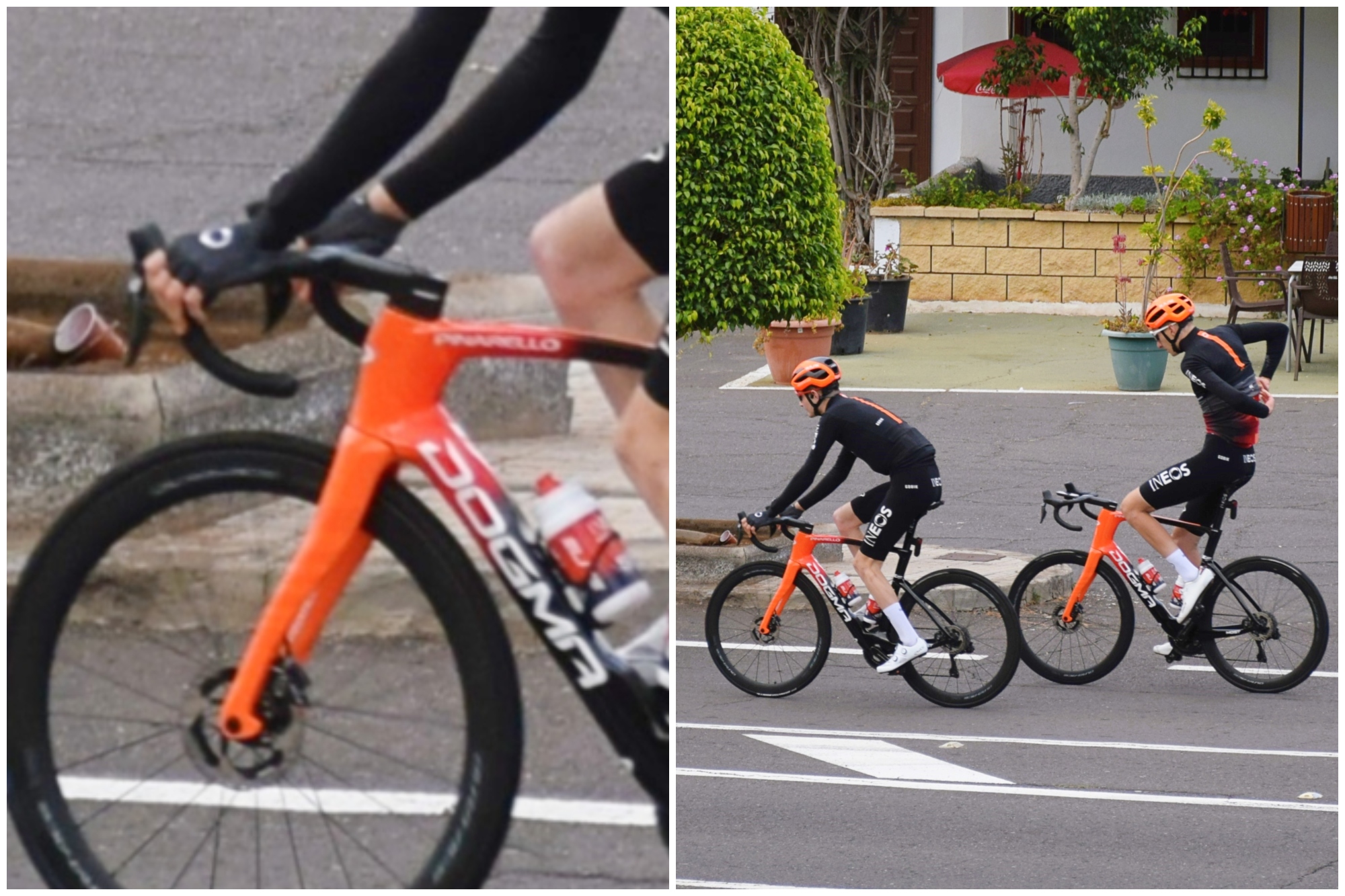
Images from Ineos' training camp showed them riding what looked like a new bike
The most striking feature, however, is the enormous bottom bracket on the Dogma F, being ridden by Ineos, which confirms my suspicions that stiffness might well become the new aero in years to come. After all, when you compare silhoettes, modern day race bikes are looking increasingly similar each year as brands battle the ever constant laws of physics in the pursuit of aero gains.
Maurizio Bellin, Chief of Operations at Pinarello previously explained to me how this could shape the future of bike development.
"There are no big gaps in terms of aerodynamics [among bikes at the top of the industry]," explains Bellin, "and that brings us to the last frontier of development - the last step of innovation, which is stiffness."
Bellin attributed this innovation to improved carbon fiber manufacturing techniques, which makes sense since it is unlikely Pinarello would release a significantly heavier bike than the current model.
So what does this mean for the Tour de France, and the wider industry as a whole?
Well it's really only positive. Huge advancements in computational modelling is allowing manufacturers to drastically improve carbon layup, which reduces weight while maintaining straight-line speed. Personally, I think there is an argument to be made that this could improve racing, too. As the performance gap narrows between bikes, so does any advantage for a given rider or team, which should in theory make racing even more leg dependant.
As for the rest of us, the outlook is similarly positive. Bikes continue to get better, and particularly as the technology trickles down, we are left with faster, stiffer, but also more comfortable bikes than ever - even if the one bike fits all ethos does make it harder to justify your N+1 purchase...

Thank you for reading 20 articles this month* Join now for unlimited access
Enjoy your first month for just £1 / $1 / €1
*Read 5 free articles per month without a subscription

Join now for unlimited access
Try first month for just £1 / $1 / €1
Get The Leadout Newsletter
The latest race content, interviews, features, reviews and expert buying guides, direct to your inbox!

Joe is Cycling Weekly's tech writer. He's always had a love for bikes, since first riding a two wheeled steed before the age of four. Years down the line, Joe began racing at 16, and enjoyed great experiences internationally, racing in Italy, Spain and Belgium to name a few locations. Always interested in tech, Joe even piloted his Frankenstein hill climb bike to a Junior National Title in 2018. After taking a step back from elite level racing in April 2022, Joe joined our team as a freelancer, before becoming Tech Writer in May 2023.
-
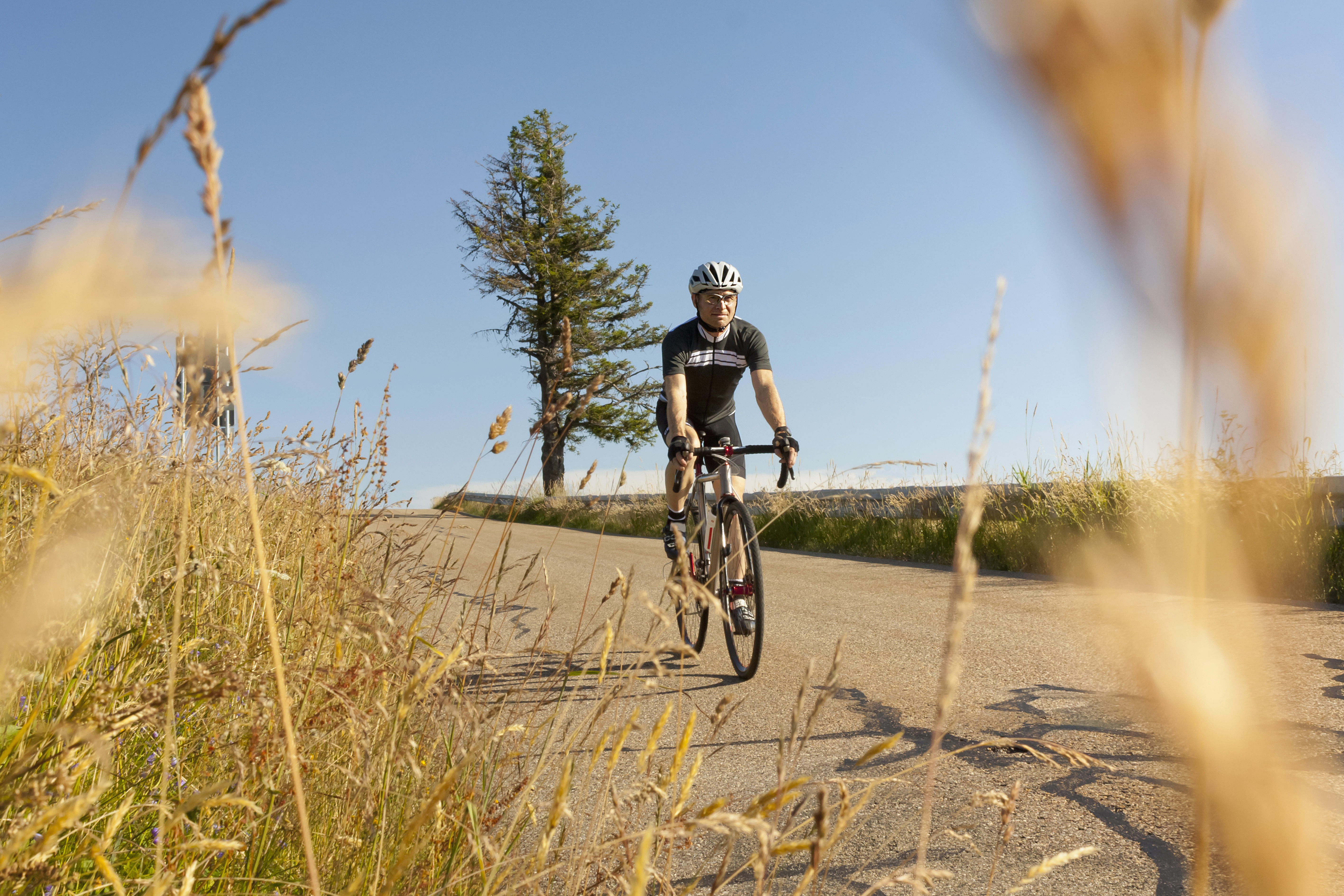 Hayfever and your riding: how to combat it as the pollen strikes
Hayfever and your riding: how to combat it as the pollen strikesExplanations, medications and holistic measures to make your spring and summer riding more enjoyable
By James Shrubsall
-
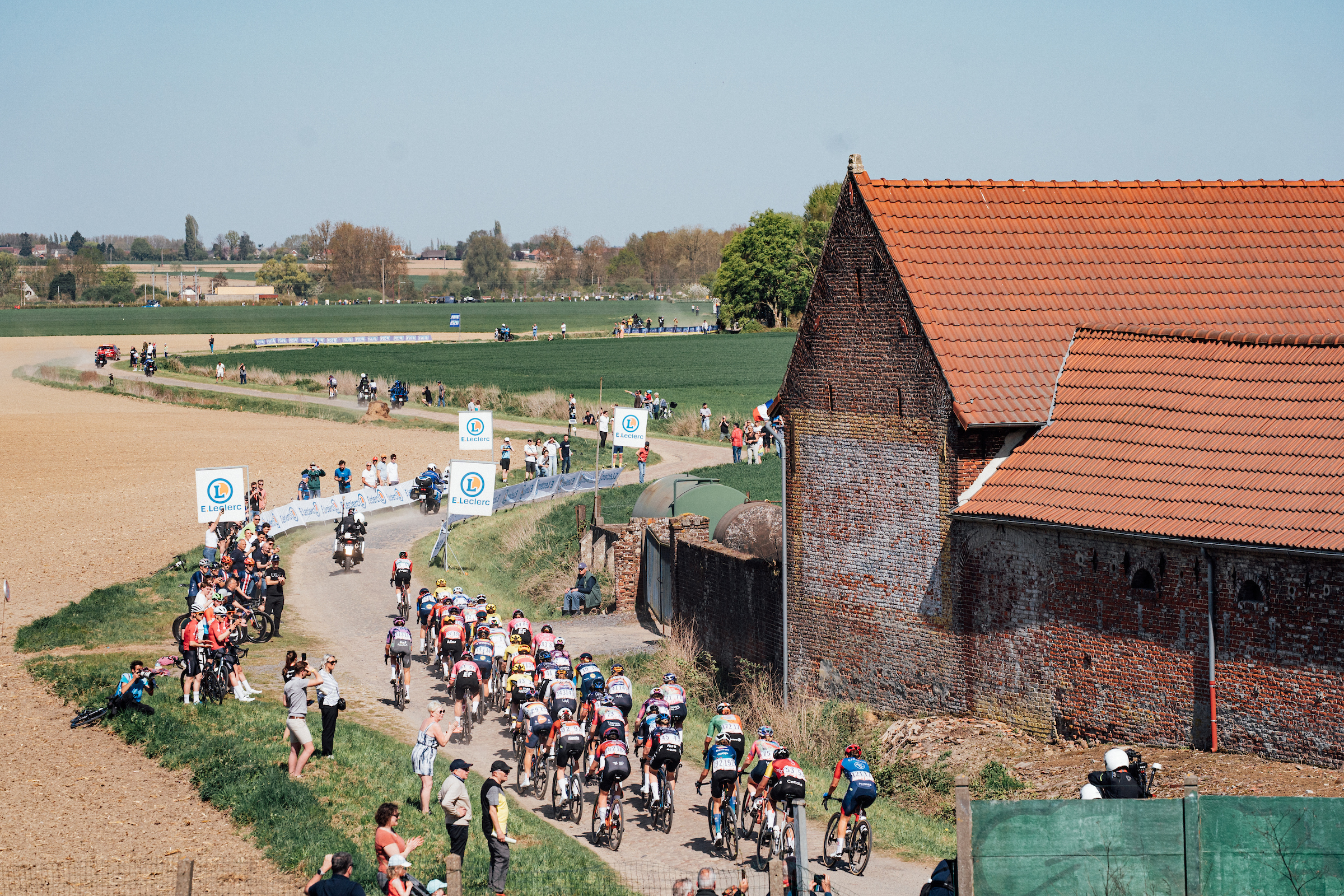 I went to Paris-Roubaix Femmes and was shocked at how it is still treated as secondary to the men’s race
I went to Paris-Roubaix Femmes and was shocked at how it is still treated as secondary to the men’s raceThe women’s version of the Hell of the North is five years old, but needs to be put more on equal footing with the men
By Adam Becket